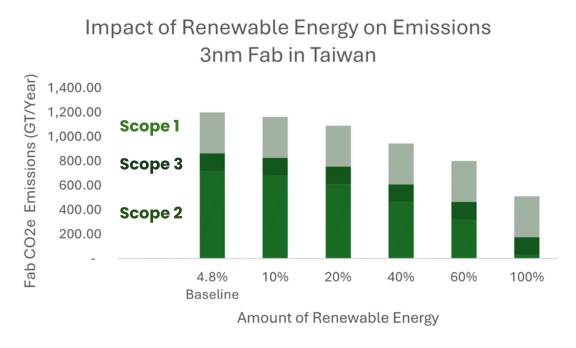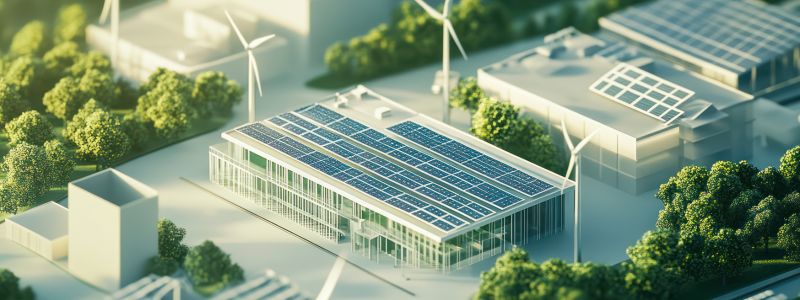Making the Case to Adopt Renewable Energy in Fabs
By Lara Chamness
TSMC requires energy and a lot of it. To complicate matters, many of TSMC’s customers are requiring the company to reduce its carbon emissions in the face of increasingly electricity intensive wafer fabrication for advanced processes. In response to these two pressing challenges, TSMC last year announced an acceleration of its RE100 sustainability goals, moving its target for 100% renewable energy consumption across all global operations from 2050 to 2040. Additionally, TSMC increased its 2030 goal for company-wide renewable energy usage to 60%, up from the previous target of 40%1.
To better understand the acceleration of this timeline, TechInsights completed an analysis on a 3nm process for a TSMC fab with capacity of 60,000 wafers per month located in Taiwan. Using TechInsights’ Manufacturing Carbon Module, our team input the following assumptions, using 2023 as the baseline year:
- 90% utilization
- 95% fab abatement
- 4.8% renewable energy usage2
The analysis explores five additional scenarios adjusting only the amount of renewable energy adoption to evaluate its effect on emissions. The results are summarized in the figure below.

1 TSMC Press Release, “TSMC Accelerates Renewable Energy Adoption and Moves RE100 Target Forward to 2040.” Accessed September 13, 2024. [Online]. Available: https://pr.tsmc.com/english/news/3067#:~:text=This%20platform%20helps%20TSMC%20suppliers%20and
2 TSMC. “2023 Sustainability Report, p. 103”. Accessed September 13, 2024. [Online]. Available: https://esg.tsmc.com/en-US/file/public/e-all_2023.pdf
Source: TechInsights Manufacturing Carbon Module 3Q24 Release, Sept 2024
The baseline scenario models annual emissions of 1,200 gigatons (GT) CO2e (carbon dioxide equivalent), a measure of carbon dioxide and other greenhouse gases (GHG), with Scope 2 emissions accounting for 60% of the total. The table below outlines how varying renewable energy usage affects emissions across the scenarios relative to the 2023 baseline.
| Amount of Renewable Energy | 10% | 20% | 40% | 60% 2030 Goal | 100% 2040 Goal |
|---|---|---|---|---|---|
| Total CO2e reduction vs. 4.8% baseline | 3% | 9% | 21% | 33% | 57% |
Source: TechInsights Manufacturing Carbon Module 3Q24 Release, Sept 2024.
Reaching TSMC's target of 60% renewable energy usage by 2030 is projected to reduce total emissions by about one-third. This equates to an annual decrease of approximately 400 GT of CO2e for a single 3nm Fab. Fully transitioning to 100% renewable energy reduces Scope 2 emissions by nearly 60%, resulting in a 690 GT of CO2e reduction.
Thinking more broadly and applying these emissions savings across multiple fabs, it becomes abundantly clear why TSMC has committed to expedite its goal of sourcing 60% renewable energy by 2030 and to fully transition to 100% renewable energy by 2040. The rapid adoption of renewable energy has the potential to significantly reduce the carbon footprint of wafer manufacturing, while securing its energy supply.














